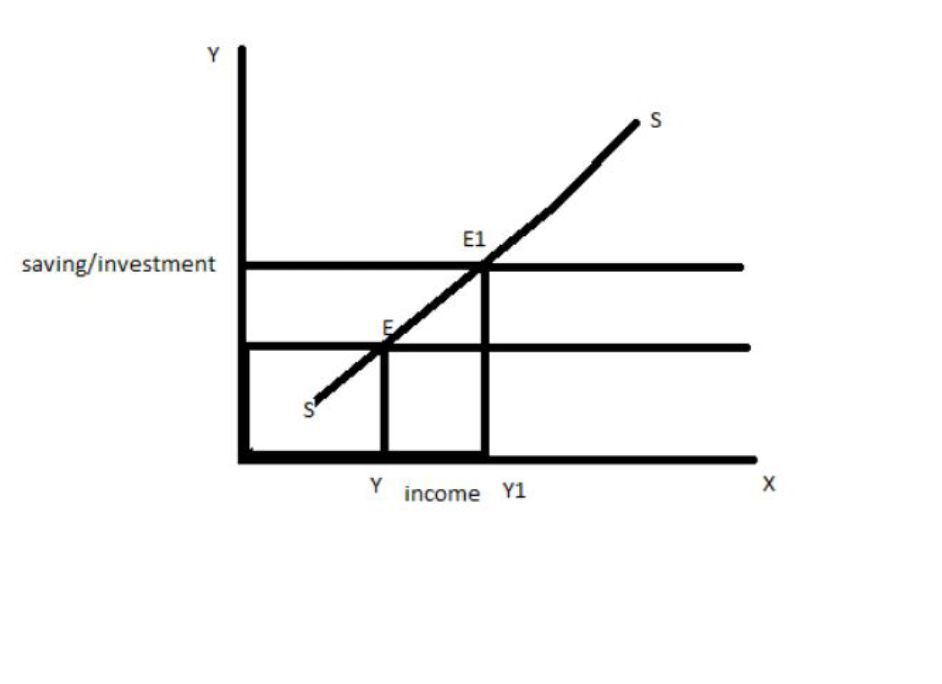Introduction:
Saving function is the counter part of consumption function because S=Y-C. Therefore S=f(Y). Saving means economic surplus, it may be defined as the difference between current income and current consumption. Keynes defined savings as an excess of income over expenditure of consumption. The Theory of savings and investment is like this.
Theory:
In case of an individual saving is that part of income which is not consume by him and in the case of the community the aggregate of the un consume part of the community the aggregate of the un consume part of national income of all member of the community represent saving, symbolically
S=Y-C
- Where S =denotes savings
- Y stands for income
- C stands for consumption
The symbolic expression of saving is applicable both to the individual as well as to the community. According to Keynes, saving is the function of income that is s=f(y).That is to say as income increases savings also increases and vice versa. Saving depends on the propensity to save which can be derived from the propensity to consume.
Thus propensity to save s/y is equal to one minus the propensity to consume c/y symbolically. Therefore
s/y= 1 c/y
According to Keynes the consumption function is a stable function of income in the short period .It follows from this that the savings function would also be a stable function of income. It should be noted that though the propensity to save is stable function of income, saving is an increasing function thus the marginal propensity to save is always greater than zero but less than unity.
Symbolically 1> delta S /delta Y >0
Determinants of saving:
- the level of income; there are three variants of the concept of income
- absolute income
- relative income
- permanent income
- income distribution
- consumption motivation
- wealth
- habit
- population
- Rate of interest etc.
Saving investment equality:
Equality between saving and investment it is regarded as an essential condition of equilibrium level of income, output and employment by Keynes as well as classical economist but, there approach and views regarding the phenomenon are altogether different and controversial.
According to Keynes the saving investment are brought into equality by income changes the schemes put towards a revolutionized Idea by treating the level of income rather than the rate of interest as a strategic or equilibrium variable which affected saving investment equality. Keynes analyze the saving investment equality on two counts
- accounting equality
- functional equality
In Keynes view investment does not depend significantly upon the level of income it mainly depends on the dynamic factor such as population growth, territorial expansion, progress of technology and business expectation of the entrepreneur thus it is unpredictable, unstable and autonomous as against savings which is stable, predictable and induced. Thus it is fluctuation in investment that causes variation in income which in turn brings about equality between savings and investment.

Of course, the Keynesians formula of saving investment relationship in its functional sense admit the divergence between saving and investment, but only at virtual level and not at observable level of income. The equilibrium level of national income is obviously the observable level of income where there is corresponding equality between observable savings and observable investment.
also read: explain the classical theory of employment.